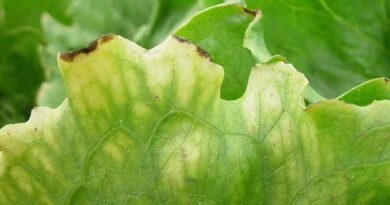Oktoberfest: Time to Raise a Glass to Weed Control!
05 October 2021, Colorado: This fall beer drinkers around the globe are celebrating Oktoberfest with a mug of their favorite brew. Scientists with the Weed Science Society of America (WSSA) say the celebration wouldn’t be possible, though, without a concerted effort to protect hop crops from the ravages of weeds.
Both large manufacturers and small craft brewers rely on hops to create their own unique recipes. Cone-like flowers harvested from female plants flavor the beer and extend its shelf-life.
U.S. hop growers battle a variety of annual and perennial weeds – from Italian ryegrass, common lambsquarters, kochia, Russian thistle and redroot pigweed to Canada thistle, yellow nutsedge, field bindweed, quackgrass and bermudagrass. Such competitors can siphon away moisture and nutrients, provide a home to harmful pathogens and insects, and interfere with hops training and harvesting.
Also Read: Organic Food Advocates Seek Reversal of Decision Authorizing Labeling of Hydroponic Operations
Weed Control Tactics
Weed control in hops involves a delicate balance. “There are few herbicides approved for use in hop crops,” says Marcelo Moretti, Ph.D., of Oregon State University. “Growers instead must rely on integrated weed management programs that complement limited pre- and post-emergence herbicides with tillage, mowing, mulching, cover crops, hand-weeding – and more.”
The challenges are similar wherever hops are grown. In the Czech Republic, which is home to the prized Saaz variety of hops, research scientist Pavel Procházka, Ph.D., of the Czech University of Life Sciences Prague says integrated control strategies are a must. “We have only one herbicide approved for dicot weeds, and three for monocot weeds,” he says. “As a result, most growers rely on tillage and cover crops.”
U.S. growers have a slightly broader range of herbicide choices – thanks in large part to the efforts of the IR-4 Project, an organization established by the U.S. Department of Agriculture to assist with the identification and registration of safe and effective pest management solutions for specialty crops.
To date the IR-4 Project has succeeded in registering six herbicides to control weeds in hops, including clethodim, flumioxazin, indaziflam, isoxaben, pendimethalin and pyrafulfen. A registration submission for the use of glufosinate in hops is pending submission to the U.S. Environmental Protection Agency. In addition, the registration of tiafenacil is among the IR-4 Project’s current research priorities, with field studies scheduled to get underway in the spring of 2022.
Regardless of the growing region or the available weed control tools, though, the best weed control strategies are prevention and early detection, experts say. The Hop Growers of America advises growers to clean equipment before moving it from one field to another, plant hops that are weed-free, screen irrigation water, carefully control weeds around field borders, and scout regularly to eliminate new weeds before they produce seed.
Interesting Facts About Hops
- Hop plants are a cousin of cannabis and hemp. All three belong to the Cannabaceae family of flowering plants.
- Hops grow upright on trellises and reach heights of 15 to 20 feet.
- The U.S. is one of the world’s largest hop producers. The crop was first introduced here from Europe in the 1600s to supply a brewery in the Massachusetts Bay Colony.
- Over 96% of S. hops are grown in Washington, Idaho and Oregon where the climate is favorable. However, you’ll also find hops in eastern states like Michigan, New York, Pennsylvania, North Carolina, Virginia, Maryland and even Vermont.
- Not all hop varieties are desirable. According to the U.S. Forest Service, Japanese hops are an unwelcome invader found in Connecticut, Delaware, Indiana, Maryland, Pennsylvania, Virginia and the District of Columbia. Vines are covered with hooked hairs that can cause dermatitis and blistering, which makes working with them painful. Dense stands can outcompete native vegetation.















